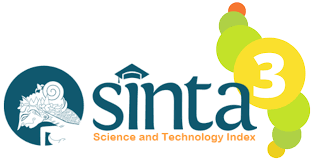PENERAPAN PASAL 51 AYAT (1) KUHP DALAM MENENTUKAN KESALAHAN DAN PERTANGGUNGJAWABAN TINDAK PIDANA KORUPSI DI BIROKRASI
(Studi Kasus Putusan Mahkamah Agung Nomor 685 K/PID/2005 dan Nomor 1393 K/Pid.Sus/2014)
DOI:
https://doi.org/10.36526/sosioedukasi.v12i1.2513Keywords:
Accountability, Bureaucracy, Criminal Code, CorruptionAbstract
This research is motivated by the fact that in recent years, many defendants from Corruption Crime cases have used Article 51 paragraph (1) of the Criminal Code, as evidenced by many Judges in the District Court (first instance) who granted the request, but many were also Supreme Court Judges who annulled it. The problems in this study include (i) What are the provisions of the position order contained in Article 51 paragraph (1) of the Criminal Code that can eliminate errors and accountability for corruption in the bureaucracy? (ii) How is the legal application of the office order in Article 51 paragraph (1) of the Criminal Code in determining the guilt and responsibility of corruption crimes in the Supreme Court Decision No. 685 K/PID/2005 and No. 1393 K/Pid.Sus/2014. This research is a normative research with juridical approach methods and analytical descriptive. The data was come from secondary data, primary legal materials, secondary legal materials, and tertiary with literature data collection. The method of analysis used is a qualitative analysis. The results of the study First, there are (2) two conditions that must be met in order for an executor of an order to escape the noose, namely subjective conditions and objective conditions. Secondly, in Supreme Court Decision No. 685 K/PID/2005, judges apply the law normatively without judging more deeply and fundamentally, as in Supreme Court Decision No. 1393 K/Pid.Sus/2014, judges are more deeply assessed regarding the condition that a person can be given Article 51 paragraph (1) of the Criminal Code.
References
Chazawi, A. (2008). Pelajaran Hukum Pidana Bagian 2 Cetakan IV. Jakarta: PT Raja Grafindo Persada.
Disemadi, H. S., & Santoso, B. (2019). Pelaksanaan Fungsi Pembinaan Dan Pengawasan Otoritas Jasa Keuangan Terhadap Lembaga Keuangan Mikro Syariah Di Jawa Tengah (Studi Pada Bank Wakaf Mikro Sunan Gunung Jati Ba’alwy). Salatiga: Jurnal Refleksi Hukum FH UKSW.
Lamintang, P. A. F. (2014). Lamintang, Dasar-dasar hukum pidana Indonesia. Bandung : PT.Citra Aditya Bakti.
Marsono, S. D. (1984). Hukum Kepegawaian di Indonesia. Penerbit Djambatan, Jakarta.
Marwan, E. (2013). Korupsi dan Strategi Nasional Pencegahan Serta Pemberantasannya. Jakarta, Referensi.
Moeljatno, S. H. (2002). Asas-asas Hukum Pidana. Rineka Cipta, Jakarta.
Muhammad, D. (2018). Birokrasi (Kajian Konsep, Teori Menuju Good Governance). Lhokseumawe: Unimal Press: Oktober.
Nurdjana, I. G. M. (2010). Sistem hukum pidana dan bahaya laten korupsi: perspektif tegaknya keadilan melawan mafia hukum. Pustaka Pelajar.
Remmelink, J. (2003a). Hukum Pidana, diterjemahkan oleh Tristam Pascal Moeliono, Jakarta: PT. Gramedia Pustaka Utama.
Remmelink, J. (2003b). Hukum Pidana terjemahan Tristam Pascal Moeliono. Gramedia Pustaka Utama, Jakarta.
Rusfiana, Y., & Supriyatna, C. (2021). Memahami Birokrasi Pemerintahan dan Perkembangan. Bandung: Alfabeta.
Rusianto, A. (2016). Tindak Pidana dan Pertanggungjawaban Pidana: Tinjauan Kritis Melalui Konsistensi Antara Asas, Teori, dan Penerapannya. Prenada Media.
Soekanto, S. (2006). Pengantar penelitian hukum. Penerbit Universitas Indonesia (UI-Press).
Wirjono, P. (1989). Asas-Asas Hukum Pidana di Indonesia. PT. Eresco.









.png)

















